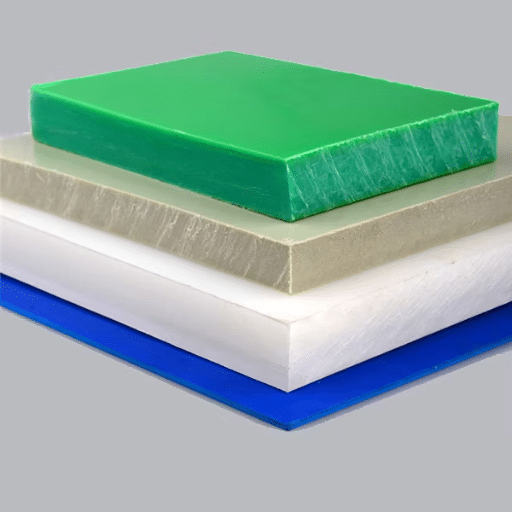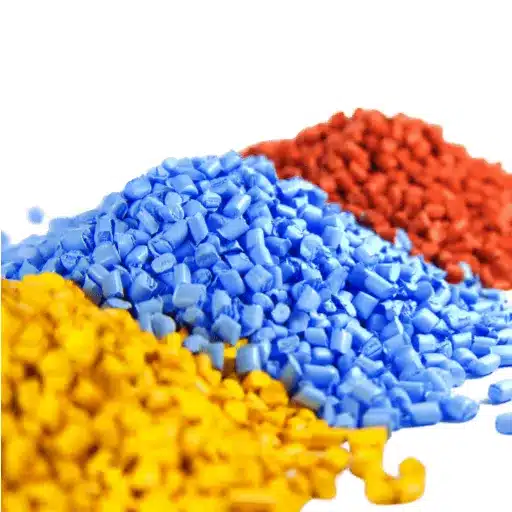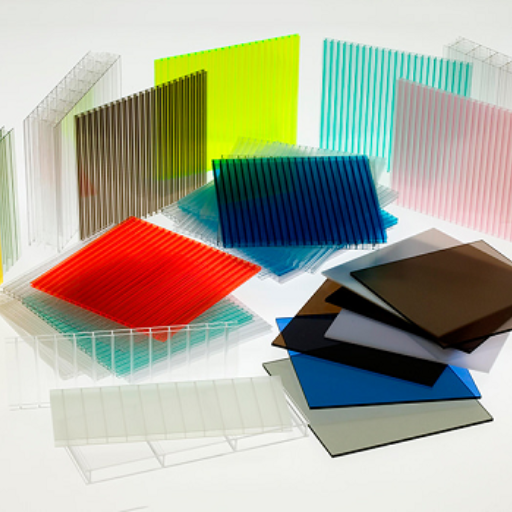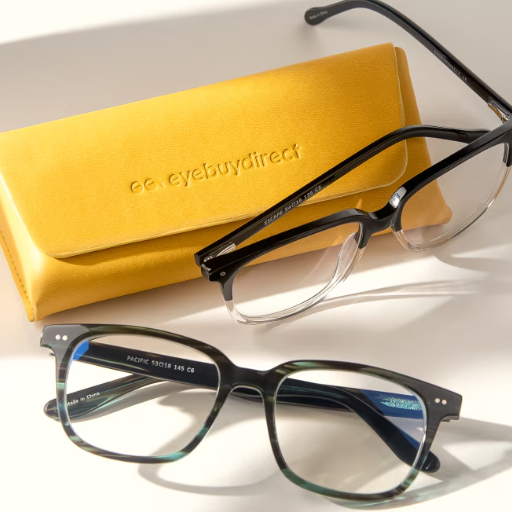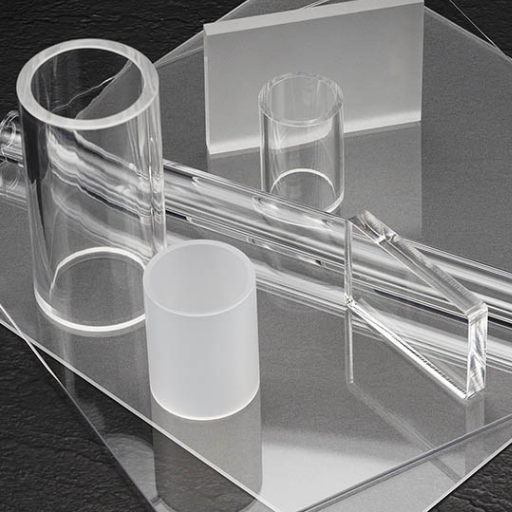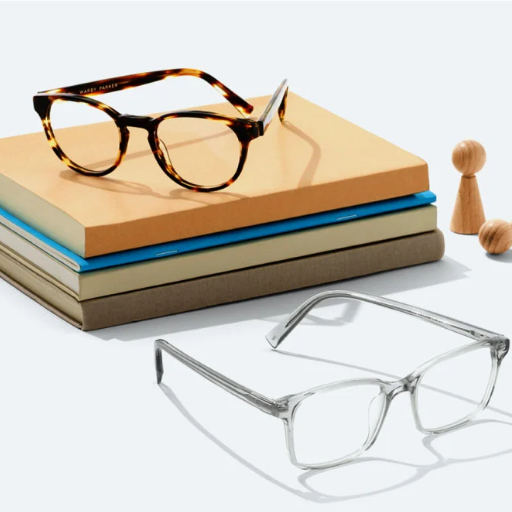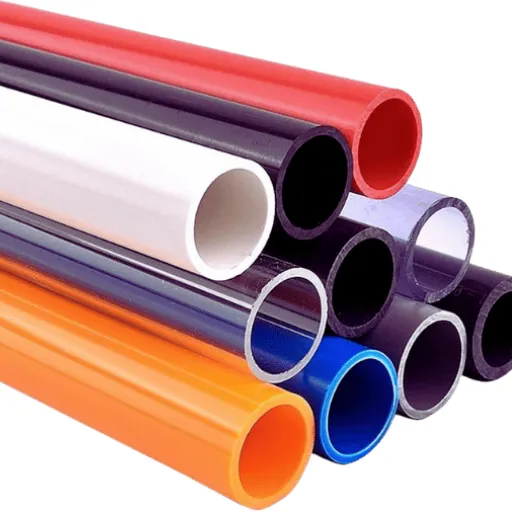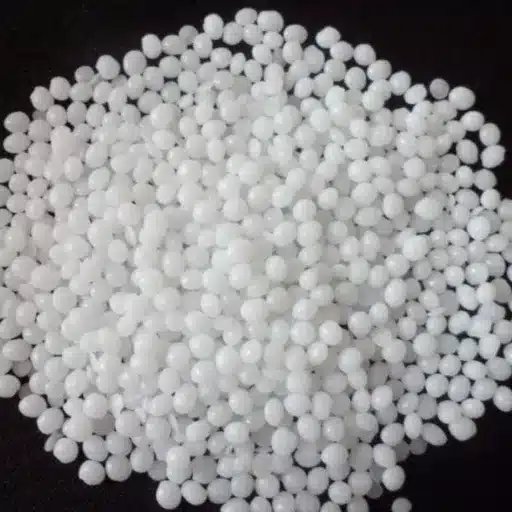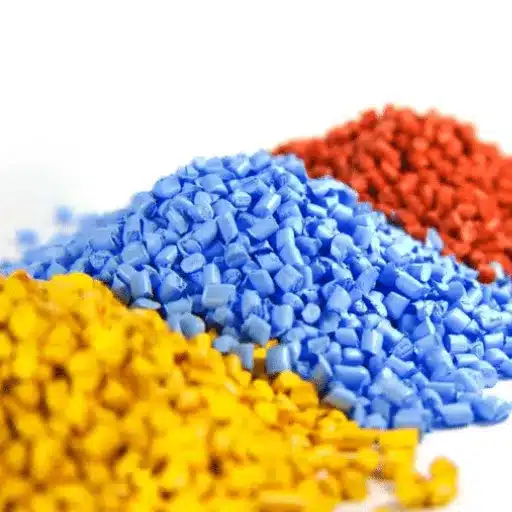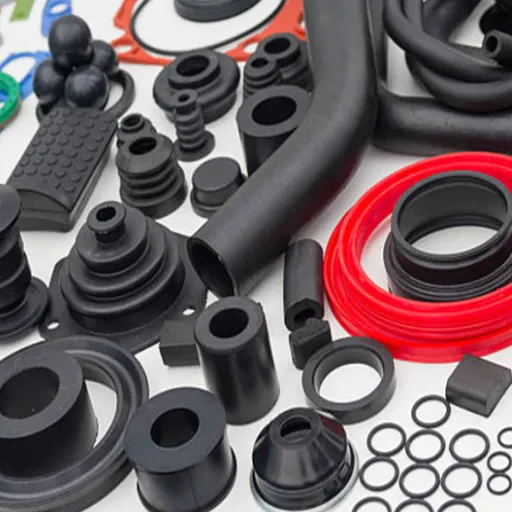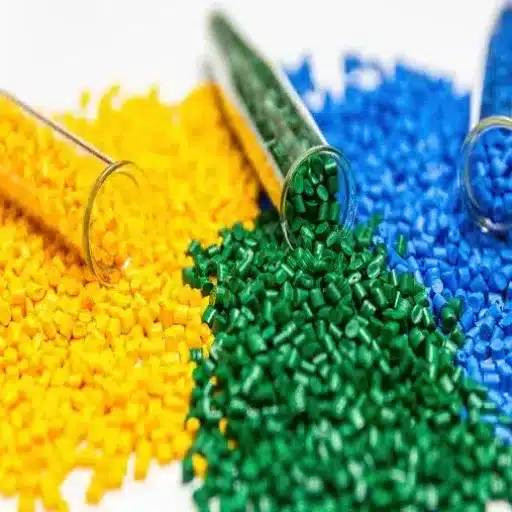Every aspect involved in choosing the right pair of glasses may have implications on the performance and durability of the eyewear. However, never underestimate the role of the lens elements in ensuring the glasses are comfortable to wear. For instance, the physical attribute of the lens’s material is determined by two glass materials, that is, traditional plastic and modern polycarbonate material. They have both shortcomings and advantages, which appeal to different people. As you read the page, you will notice how each design factor of these two plastic materials differs significantly, including discrete features such as safety, weight, optical clarity, dimensions, and cost, which are particularly important in specialization for eyewear protection. It does not matter whether one is selecting eyewear for daily use, sports, or special occasions; they will need to appreciate these significant distinctions in lenses to meet their lifestyle, vision requirements, and personal convenience. The refraction spectacle lenses are equipped with products in terms of their composition and also in terms of how they help the person achieve clear sight and protect the eyes, which is the thesis of this essay. Continued debate over plastic vs. polycarbonate lenses will also help determine what would be most effective for an individual.
Overview of the Plastic Lenses
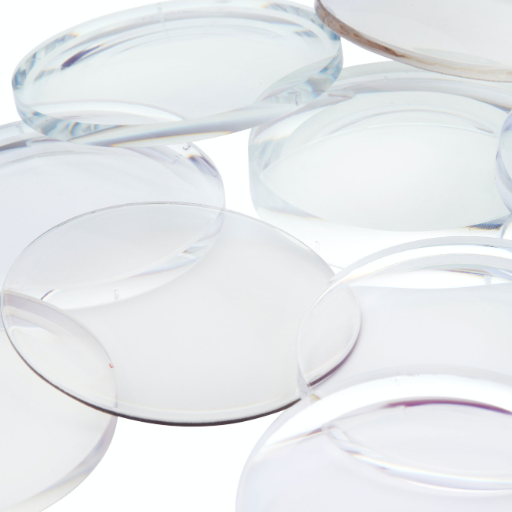
Proudly, plastic lenses are surpassing their counterparts because of their reduced mass, making them increasingly applicable to glasses. Plastic Lenses, especially versus other types of lenses, are very capable of being manufactured as they allow for a wide range of prescriptions and also lens coating. These lenses, as clear as they are, offer less protection from impacts to the face or the eyes, which is why they are not recommended for environments with increased risks like sports activities. Nonetheless, they are usually affordable and capable of improved aesthetic appeal as well as functionalities that can gain different colors or finishes in the polymer. Such glasses are even more for everyday use and not too custom-oriented. Since the materials are prone to scratches, they tend to wear out easily if not handled with care, especially the plastic lenses.
Types of Plastic Lenses
|
Type of Plastic Lens |
Description |
Key Features |
Best Suited For |
|---|---|---|---|
|
CR-39 Lenses |
Lightweight standard plastic lenses |
Affordable, clear optics, customizable |
Everyday eyewear |
|
Polycarbonate Lenses |
High-impact resistant plastic lenses |
Durable, UV protection, lightweight |
Sports, safety glasses, active lifestyles |
|
Trivex Lenses |
Advanced lightweight and impact-resistant lenses |
Sharp optics, superior durability |
Premium frames, safety and sports use |
|
High-Index Lenses |
Thin, lightweight lenses for high prescriptions |
Slim design, clearer vision |
Strong prescriptions, fashion eyewear |
|
Photochromic Lenses |
Lenses that darken in sunlight |
UV protection, adapts to light conditions |
Outdoor and indoor environments |
|
Polarized Lenses |
Lenses with anti-glare properties |
Reduces glare, enhances visual comfort |
Water sports, driving, outdoor activities |
Clarity and Optical Performance
In the tenet of modern optics, another eyelid, which is impossible not to hit, is the lens technology, which has become problematic ever since multifocal lenses. No other kind of glasses equals high-index as they are not very thick, even when using the strongest of view, and there is almost no g-shaped effect. The same goes for photochromic lenses, which shift in the degree between two values of light to both eyes, from indoor to outdoor ones, filtering the necessary dangerous ultraviolet radiation and lessening the burden on them. They are effective in reducing glare in certain environments, such as driving through water or snow. This light filter uses concept design methods and the latest technologies in making sure that they meet the clients’ needs operation-wise and the aesthetics all in one.
Durability and Scratch Resistance
In addition to the increasing intensity of the scene, the advances made in the art of lens making, the so-called coatings, have made these improvements even stronger. And, these extra glass equipments is the latest development as they both increase the durability and protect the lenses from scratches. Sale of the most sophisticated forms of lenses, which have scratch-resistant treatment at the same time, is possible only after these so-called coatings pass the necessary tests in order to prove that they conform to certain hardness and adhesion standards under such extreme conditions. These will prolong the life of the lens, maintain its clarity and overall customer satisfaction.
Overview of the Polycarbonate Lenses
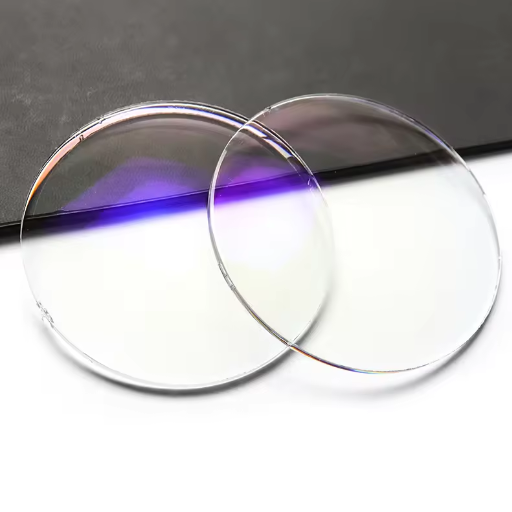
The inclusion of lenses in the prototype of eyeglass lenses is a program that presents some risk factors in terms of licensing and market introduction. Polycarbonate lens is the favored choice by most people who engage in and enjoy all kinds of sporting activities. Their form influences this, their strength in relation to their weight, and definitely because they do not crack easily. Polycarbonate ones are also able to provide a barrier against UV rays because they operate at 100% which is definitely an advantage over regular sunglasses or contact lenses. Thin and lightweight, they empower comfortable wearing for the whole day, and are suitable for a wide range of prescriptions. Polycarbonate has always been known for its sturdy materials and lenses, which are ideal for any optical concerns.
Types of Polycarbonate Lenses
|
Type of Polycarbonate Lens |
Key Features |
|---|---|
|
Standard Polycarbonate |
Lightweight, impact-resistant, blocks 100% UV rays. |
|
Photochromic |
Darkens outdoors, adapts to changing light conditions. |
|
Polarized |
Reduces glare, enhances visual clarity in sunlight. |
|
Anti-Reflective Coated |
Minimizes reflections, improves vision and lens aesthetics. |
|
Blue Light Filtering |
Filters harmful blue light, reduces digital eye strain. |
|
Tinted |
Customizable colors, enhances contrast and style. |
|
Progressive |
Corrects near and far vision seamlessly, no bifocal lines. |
Impact Resistance and Safety Features
Such eyeglasses have been continuously enhanced by combining improved materials and additional functions within a slim and compact shape, in different sizes. Among specific technical materials, both polycarbonate and Trivex lenses are applied, possessing great impact strength, attenuation of pressure, and breakage abilities about ten times more than normal glass/polycarbonate. These materials are very useful when it comes to children, athletes, or people working in high-risk environments.
Disadvantages of Polycarbonate Lenses
- Lower Scratch Resistance Compared to Glass
Scratch-resistant coatings are typically applied to polycarbonate lenses, though they do tend to scratch more often than their glass counterparts, with time and insufficient protection that alters optical properties.
- Reduced Optical Clarity
The density considered here is not supported by such small monochromatic lenses, given that the low Index of materials such as glass may not be stimulating. This difference, as numerated by the nominal refractive index wavelength (a companion to lateral chromatic aberration) is closer to 30 in polycarbonate whereas in glasses the Abbe value tends to be higher often in excess of 50. Lower normal color dispersal in polycarbonate with a ratio of 30 would generally lead to considerable lateral color stain, manifesting white pictures to be true, particularly the peripheral pictures.
- Susceptibility to Chemical Damage
Polycarbonate, unlike glass or some other high-level plastics, does not resist chemicals in the same way. Some solvents, e.g., acetone or ammonia, can erode the surface of polycarbonate, which in turn can lead to damage or impairment if not applied with caution.
- Cost Considerations
Polycarbonate offers fewer benefits than some of the more expensive materials for lenses’ production, and ranks higher in price than a typical material, namely, CR-39 lenses. These preferences can be critical for the individual looking for reasonably priced eyewear options.
- Sensitivity to High Temperatures
Similarly, high exposure to temperatures, both types of lenses, i.e., polycarbonate and glass, are shown to have different characteristics. As a result of this property, polycarbonate lenses are not preferred or used in facilities that require frequent exposure to heated surroundings.
Despite all these downsides, the polycarbonate lens remains quite popular among Western societies due to many benefits, including the lightness of the design of the frames and the resistant lightweight material that is used, so they fit in with activities such as most sports. However, all the above should be weighed against the specific objectives of potential users so that a choice can be made in an informed manner.
Comparing Plastic vs Polycarbonate Lenses
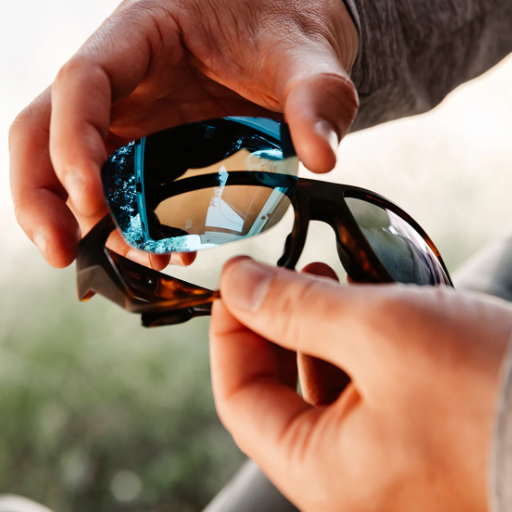
The market rate for these lenses may be a fortune, but plastic ones will always be more pocket-friendly compared to polycarbonate lenses. Moreover, the former will be convenient even in fluctuating temperatures, while the latter will not. In spite of all this, plastic lenses have the drawback of being heavier and can break easily when they fall and come into contact with any hard surface, such as the floor. In this regard, weight is no longer a problem.
On the flip side, polycarbonate lenses are exceptional for safety glasses, sports glasses, and children’s glasses due to their anti-impact features. They are also much lighter wear, and hence, those individuals who require eye protection for long durations will find them more convenient. Their only major drawback is how easily they can be scratched and distorted they are because of the material being softer, though this can usually be remedied with the help of scratch-resistant coatings.
When comparing the properties of plastic and polycarbonate lenses, one must take care to consider the intended use, location and target customer. Plastic lenses are perfect for general applications that are conducted under normal conditions, whereas polycarbonate lenses are more suited for activities where heightened durability and resistance to impacts are required.
Weight and Comfort
Furthermore, the issue of weight and warmth is a central factor in defining consumer satisfaction when users have to put on the glasses for many hours. The difference in the weight of glasses is often attributed to the density of the matrices in which the upgraded plastic as lenses are contained. Nevertheless, advanced developments in lens configuration as well as materials, such as high index resins, have reduced plastic lens weight yet not the visual performance. In contrast to that, due to the fact that polycarbonate has a much lower density, these lenses are inherently lighter, thereby ensuring that they can be worn even for long periods, more so in the case of large frames or people with strong prescriptions. This feature, the lightweight of polycarbonate lenses, is especially favorable to kids, people engaged in sporting activities, and individuals who expect minimum pressure on their face for activities they undertake for most of the day.
Durability and Impact Resistance
On the other hand, polycarbonate glasses are known for their strength and ability to withstand heavy use, and they even work better in harsh conditions as compared to many materials traditionally used. With a resistance to impact that is roughly 10 times more than that of standard plastic lenses as well as glass lenses, polycarbonate has a very recent history as a prominent material used in protective programs such as safety glasses and sports glasses, among other applications. This improvement in resistance is a result of the structural make-up of the material, as it breaks energetically as opposed to breaking as expected. Besides, technological advancements have also changed according to the guards into the coating technology to ensure that the lifespan of the lenses is increased, and that they do not break even when used intensively. In this way, strength and durability not only provide protection of well-being among users, they also contribute to the general worth of the product.
Scratch Resistance
Choosing the Right Lenses for Your Needs
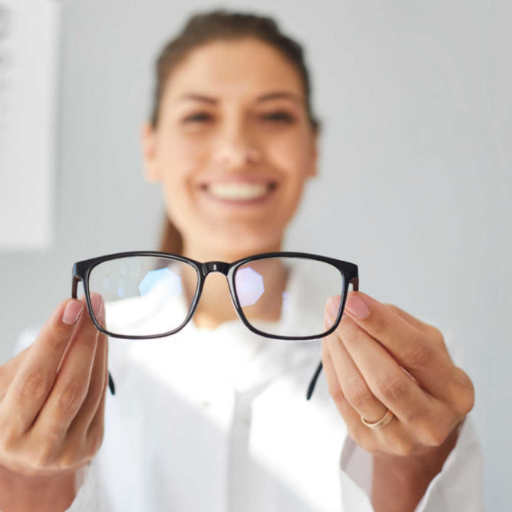
It is essential to have an idea of what your eye condition needs and the kind of life you lead most of the time when you look for glasses. When choosing lenses, single-vision lenses are usually preferred in most cases since they are designed to correct either myopia or hypermetropia. Progressive lenses work better for those who would prefer to have a seamless transition between various prescriptions, such as distance and close distances. For those who drive at night with loads or face PC issues, particularly ones that exhibit plenty of glare, AR coatings may come in handy. For engaging in outdoor sports, the image below shows how a pair of photochromic lenses would react to various light intensities and at the same time, protect the eyes against the harmful ultraviolet light radiation. It is also of paramount importance that the lenses are used for the right purpose and the best material is used, such as the features of polycarbonate lenses, which are alloyed and can be used for those with active lifestyles. High index, however, are for when so thin and light lenses are desired.
Types of Lenses Based on Lifestyle
- Single-Vision Lenses
Single vision lenses are for those individuals who need correction only on one aspect of their sight, either myopia or hypermetropia. They are good for particular job combinations, reading lenses, driving lenses, and general purpose lenses, as these are designed for a specific distance. Modern single-vision lenses come with options of enhanced coatings to protect them or for use in blue light emitted from digital screens for everyone who excessively uses digital devices.
- Progressive Lenses
Progressive lenses are an example of a design that combines multiple focal areas in a single lens for persons with presbyopia, and they allow presbyopia patients to do away with extra pairs of glasses. There is a smooth change in the focal length of lenses as images are formed at different focal points in progressive lenses. This lack of a line of demarcation eases the transition from one focal zone to the next and makes the lens more cosmetic. However, there are many activities, such as electronic reading and computer use, which can be difficult to implement with progressive lenses and in frame-to-frame fitting. The new advances with progressive design, however, are measured by the amount of optic activity inclusion with eye movement, and comfort is enhanced, as the feathers connect only at one end of the lens, reducing the need for central vision and its adaptation process.
- Polarized Lenses
Polarized sunglasses, on the other hand, are effective in minimizing sunlight’s reflected glare. Polarized glasses, rather have an inbuilt Domino filter that substantially reduces the sun’s glare thereby reducing eye discomfort and also Its strain. They are recommended very specifically for fishing, boating, or driving, especially in the evening. These are also offered as prescription glasses, where corrective surfaces are added in the lenses, so that the patient does not need a regular surface correction.
- Sport-Specific Lenses
Sport-specific lenses, designed for athletic and outdoor use, are carefully engineered to withstand tough conditions and improve vision. They are often made with polycarbonate—a material that is consequently hard to break and forms a part of the lens, providing safety for practitioners as they engage in their sports. Furthermore, some come with specialized tints and coatings that improve contrast, depth perception, and sight – for example, yellow or amber tints prove to be very effective in very dim situations whereas more concentrated tints prove to be much better in very bright sunlight. Wrap-around frames are also quite common in recent designs and offer a slightly wider perspective in terms of peripheral vision for wearers.
- Occupational Lenses
There are also work-related or occupational lenses that are necessary in other work environments. For example, lenses that are adjusted for office work tend to provide better intermediate and near vision assistance ,thereby avoiding correcting spectral lens function and needing the person to move their head up and down between a desktop computer and the paper. For example, there are specialized prescription safety lenses that can be worn by personnel who work in industrial or construction fields and are made from high-grade materials such as Trivex or polycarbonate for protection against objects as well as impact. These lenses are indispensable, since they are purpose-driven and enhance productivity and visual magnification in professional spheres.
Cost Considerations
As expected, the price of prescription lenses fluctuates greatly based on factors such as the material of the lens, any coatings applied, and selective enhancement of the lens. The majority of prescription lenses for eyeglasses are most affordable, coming with standard plastic lenses, whereas high-index lenses suitable for high prescription powers generate much expense due to their feature of thinness and feather lightness. Along with these, we also have additional add-ons such as anti-reflective coatings, blue block lenses, or tint as well as mutation rendering and photochromic application that all affect the price. For example, the best price would be for a pair of glasses with a prescription for $50 to $100 without any special additional treatments and an advanced pair with high-level materials and multiple layers would fall between $150 to $400 or more. This knowledge is crucial if one is to make decisions that are effective while conforming to the available resources and the requirements of the person’s eyes.
Real-World Comparisons
Real-World Applications and Recommendations
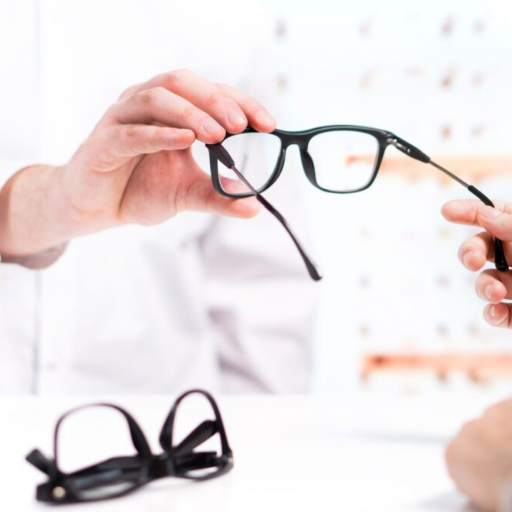
Before availing of any lens, always ensure that the material meets your specific requirements. Depending on the task in question, the majority of people’s requirements are met with one-vision lenses needed for keeping things clear and focused. Some people have fussy eyes that need both distant and near vision to function quickly. Progressive lenses can be used without much success. There is no need for glass as it is almost likely loose and suspended.
People who constantly stay a lot of time staring at phones, TV or computers can easily experience dry eyes not only as the skin of the eyes is loosening and drying with excess radiation exposure but also feeling comfortable enough is difficult. In the same light, people who commonly work under the sun or in other environments where there is a lot of reflectiveness have the option of using photochromic or polarization coatings to reduce glare and enhance the visibility of objects.
It is desirable to focus on wear-resistance and optical clarity for the lenses, all the more so for permanent cosmetic needs. It will help determine how the released lens caters to the visual tasks and the lifestyle of a person under which the lens will be used.
Best Uses for Plastic Lenses
- Daily Eyewear
Plastic lenses, particularly those which were made of polycarbonate or CR-39 material, are ideal lenses that can be used on a daily basis. They are designed to be lightweight so one will not feel tired on their face when they are worn for an extremely long time, and thus are recommended for those who rely a lot on their gadgets or usually do outside work.
- Children’s Glasses
The capability and strength of the plastic lenses when it comes to striking them show why it is always the best candidate material to have on kids’ glasses. These can be one of the most resistant to breaking children’s lenses, as polycarbonate lenses were found to be 10 times stronger than glass, thus avoiding accidents or breakage of the eyewear.
- Sports and Safety Glasses
Lenses made from plastic are necessary for the eyes of many sportsmen. They are important for people working in a situation when there is an increasing danger of the eyes being damaged because they do not break easily when struck by a quickly moving object or another object hits the face of the user.
- Prescription Sunglasses
Plastic lenses are best for blood sugar monitor and UV coatings applications as they have the best performance for it. The tinting helps make the viewing less glare-focused and instantly will drive the sunglasses to the beach.
- High-Index Lenses for Strong Prescriptions
Patients who require high powered lenses for clear vision may find high-index plastic lenses more comfortable. Traditionally, glass lenses are thicker and larger, even with strong powered lenses, which may create a compromise.
Best Uses for Polycarbonate Lenses
- Safety Eyewear
Polycarbonate lenses are well known for their shatterproof qualities and therefore provide crucial protection against impacts such as debris or pointy objects. They are considered the ideal lens material to use for safety glasses used in the field of industrial work, laboratory, and construction, following OSHA regulations and standards. When it comes to materials, polycarbonate is one of the best choices in protective eyewear goggles, so this type of plastic frame is covered under the various provisions of ANSI and also complies with the ANSI Z87.1 safety rating.
- Children’s Eyewear
Polycarbonate lenses are also superior for making kids’ glasses because they can never break. Kids are usually careless, and in the case of glasses for kids, the attendant will most probably be dropping them a lot of times. It has been observed that compared to standard plastic lenses, damage due to breakage has been cut by at least 80% through the use of polycarbonate lenses.
- Sports Eyewear
There are other benefits to using polycarbonate lenses as a useful material, as athletes appreciate the clients they serve. These types of lenses are found in eyewear for sports and certain activities like cycling, basketball or skiing. They ensure that fluid movements won’t harbor any scratches and breaks, and are like water to a sport that has its own demand for eye protection.
- Sunglasses and UV Protection
Polycarbonate has an inherent quality of blocking 100% of UVA and UVB radiation, making it a suitable material for making sunglass lenses. This is especially beneficial in outdoor as well as high-light conditions, where it offers a fantastic level of eye protection, along with long service to hypervigilant individuals.
- Wraparound and Rimless Frames
Reference Sources
-
Control of Crystallization of PBT-PC Blends by Anisotropic SiO2 and GeO2 Glass Flakes (2022):
- Key Findings: This study explores the crystallization behavior of polycarbonate (PC) blends with PBT (polybutylene terephthalate) using anisotropic glass flakes. It highlights the plastic deformation of these materials under mechanical stress, suggesting structural changes rather than brittle breakage.
- Read more
-
Surgical Therapeutic Decision in Cases of Acrylic Resins Use in Achieving Total Removable Prosthetics:
- Key Findings: This paper discusses the use of polycarbonate resins in medical applications, particularly in prosthetics. It compares the properties of polycarbonate with other materials like acrylic resins and ceramics.
- Read more
-
Advances in Additive Manufacturing of Polymer-Fused Deposition Modeling on Textiles (2024):
- Key Findings: This review highlights the use of polycarbonate in additive manufacturing, emphasizing its high resistance and suitability for innovative applications like 4D printing.
- Read more
Frequently Asked Questions (FAQs)
Q: What are the advantages and disadvantages of plastic lenses?
A: Plastic lenses provide several benefits, including being lightweight and impact-resistant. They are a popular choice for everyday eyeglasses and sunglasses as they are less likely to shatter compared to glass lenses. However, one of the disadvantages of plastic lenses is their susceptibility to scratches, which is why many opt for a scratch-resistant coating. Additionally, plastic lenses may not offer the same level of optical clarity as glass lenses. Overall, understanding plastic lenses involves weighing their affordability against their durability and scratch resistance.
Q: What is the overview of polycarbonate lenses?
A: Polycarbonate lenses are a type of lens material that is known for being lightweight and highly impact-resistant. Introduced in the 1970s, polycarbonate lenses naturally block harmful UV rays, making them an excellent choice for outdoor activities. One of the advantages of polycarbonate lenses is that they are thinner than regular plastic lenses, providing a more streamlined look. However, they may have a disadvantage in terms of scratch resistance unless treated with a scratch-resistant coating. Overall, polycarbonate lenses have become increasingly popular in both eyeglasses and sunglasses.
Q: How do polycarbonate lenses compare to regular plastic lenses?
A: When comparing polycarbonate lenses vs regular plastic lenses, several key differences emerge. Polycarbonate lenses are generally lighter than plastic lenses, making them more comfortable for prolonged wear. Additionally, polycarbonate lenses are more impact-resistant than plastic, which can be particularly beneficial for active individuals or those needing high-prescription lenses. However, regular plastic lenses may be less expensive and can still provide adequate vision correction for those with less demanding visual needs. Ultimately, the choice between these lens types should consider lifestyle, budget, and specific vision requirements.
Q: What should I know about choosing the right lenses?
A: Choosing the right lenses involves understanding the different types of lenses available, including plastic, polycarbonate, and glass. Factors to consider include weight, durability, and the presence of a scratch-resistant coating. For those with active lifestyles, polycarbonate lenses may be the best option due to their lightweight and impact-resistant properties. Conversely, individuals looking for enhanced optical clarity might prefer glass lenses, despite their weight. It’s essential to evaluate personal needs and preferences when deciding between plastic or polycarbonate lenses.
Q: What are the disadvantages of polycarbonate lenses?
A: While polycarbonate lenses offer many benefits, there are also some disadvantages to consider. One notable drawback is that they can be prone to scratching, although this can be mitigated by applying a scratch-resistant coating. Additionally, some users report that polycarbonate lenses may not provide the same optical clarity as higher-index glass lenses. Furthermore, polycarbonate lenses can sometimes create visual distortion for those with high prescriptions. Understanding these disadvantages is crucial for making an informed decision when selecting lenses for eyeglasses or sunglasses.






